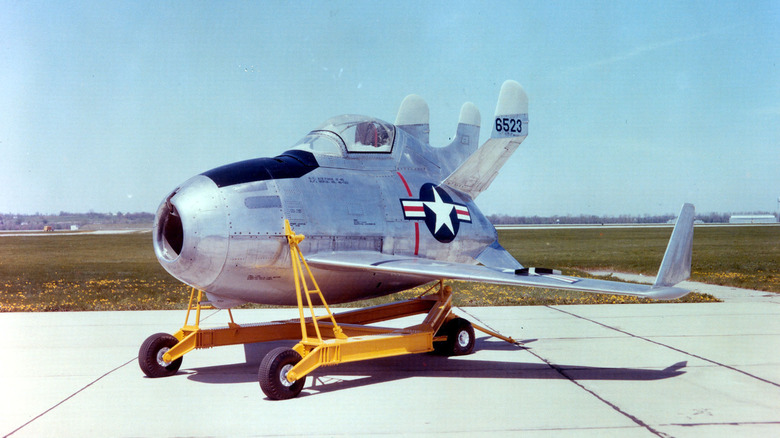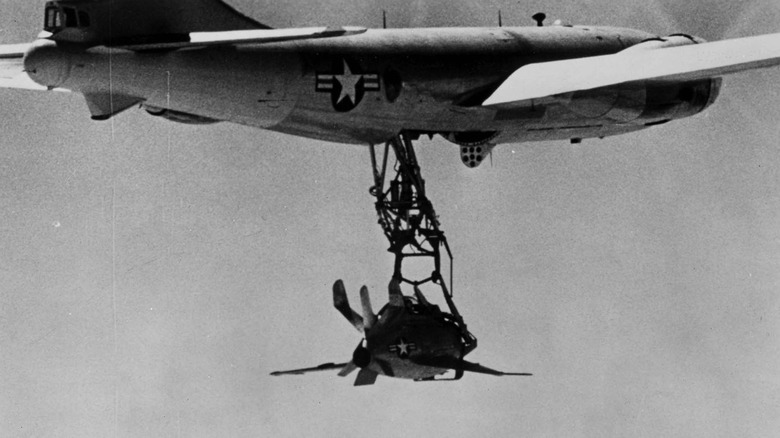Goblin Parasite Fighter: The Strange Little Jet Designed To Be Launched From A Bomber
As the Cold War was kicked into high gear at the end of World War II, long-range strategic bombers like the proven Boeing B-29 Stratofortress, the ironically named Convair B-36 Peacemaker, and the hyper-advanced Boeing B-47 Stratojet became the go-to weapon (or deterrence) in the new nuclear age.
Long-range bombing first became feasible in World War II as the Allied Forces struck Axis targets deep within Third Reich or Imperial Japanese territory. Bombing missions would include fighter planes to protect the bombers from being harassed by either incoming anti-air weaponry or enemy fighter planes. Planes like the P-51 Mustang and Lockheed P-38 Lightning excelled at this role and allowed allied Beoing B-17 Superfortresses and B-29s to knock out strategic factories, bridges, and other targets to help win the war.
As bomber technology advanced after the end of the war and proposed bombing missions had significantly longer ranges, the need for capable escort fighters became more dire. In 1945, aircraft makers McDonnell Douglas Aircraft Corp. came up with an idea that might be bizarre enough to work and give attacking Soviet MiG fighters something to contemplate, the XF-85 Goblin Parasite Fighter.
Too weird for prime time
Take one look at the Goblin and you'd be forgiven if you thought it was an altered photo or a nonfunctioning art piece. But the Goblin actually made several flights in 1948 and was reportedly very easy to fly and remarkably controllable despite its over 14-foot length and 21-foot wingspan. It was (and still is) the smallest fighter jet ever. The Goblin was small because it was designed to be deployed from the cramped bomber bay of a B-36 via a trapeze system. It was intended to act as an escort fighter and keep bombers safe with its relatively weak armament of four .50 caliber machine guns.
It was powered by a Westinghouse XJ-34 turbojet engine that produced around 3,000 pounds of thrust. Fully loaded, it reportedly weighed around 5,600 pounds (roughly the curb weight of a 2022 Chevy Tahoe) and had a top speed of a remarkably fast 650 miles per hour.
Despite its relatively easy to fly characteristics, the goofy-looking little plane was not long for this world. Tests involving a modified B-29 revealed that the launching and reattaching system was too complicated for its own good and prone to failure. Plus, according to the National Museum of the Air Force, aerial refueling systems were proving to be a less outlandish solution to keeping escort fighters in the air than dropping a tiny jet out of a plane and hoping for the best. Only two prototype aircraft were ever completed.

